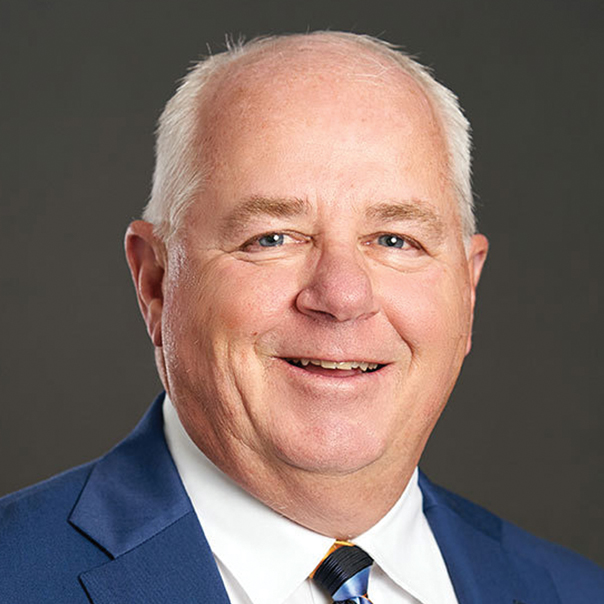The mortgage industry has experienced challenging conditions during the last 18 months. The lowest recorded interest rate ever for a 30-year fixed-rate mortgage was 2.65% in January 2021, allowing millions of borrowers to either buy a home or refinance to lower their mortgage payment.
Last fall, the 30-year mortgage rate shot up to nearly 8% as the Federal Reserve attempted to combat inflation. Although the rate has declined in recent weeks, the rapid increase after such a historic low has shocked the system.
“If you have a creditworthy borrower who may not qualify for a conventional mortgage, it is likely that there is a non-agency program available to them.”
Further compounding the problem, especially for first-time homebuyers, is the rapid rise in home values since the onset of the COVID-19 pandemic. The median home sales price increased nearly 46% from first quarter 2020 to fourth quarter 2022, according to data compiled by the Fed, a result of demand outpacing supply and the pandemic creating a possibility for people to rethink their housing needs as more companies allowed remote work.
Over the years, mortgage products have been created to offer borrowers multiple options and opportunities to buy a home or tap into the equity of their current homes. While agency mortgages remain the most-originated product, non-agency mortgages are proving to fill a real need in this tight housing market. Additionally, the growing popularity of closed-end second lien mortgages is a notable trend on the broader landscape of non-agency loans. ⊲
Non-agency loan programs have been around for decades but have become more mature in recent years. A non-agency mortgage, also known as non-qualified mortgage (non-QM), is a type of home loan that is ineligible to be purchased by the government-sponsored enterprises or the federal government. Independent mortgage banks typically hold these loans for investment, or they are issued as mortgage-backed securities into the private market.
“Originators who are sitting on the sidelines, waiting for interest rates to drop have an opportunity in front of them: entering the non-agency market because it is the only area of growth today.”
Where does the non-agency loan fit into the larger housing ecosystem, and who are the types of borrowers who would benefit from them? Since non-agency loans are not eligible for delivery to the agencies, they open up financing opportunities that would otherwise not be available.
Self-employed borrowers are one type of client who can benefit from a non-agency loan. Other types of borrowers who could benefit from non-agency loans include those with alternative income types (bonus-heavy income, commissions, etc.), investors or foreign nationals.
Credit-impaired but cash-rich consumers (significant liquid assets, but credit profile does not fit to conforming guidelines) or borrowers who have significant equity in their homes can benefit from these loan programs. In many of these situations, the documentation needed to support the approval for these programs is equivalent to what is often seen in an agency program, thereby providing confidence that the borrower will have the ability to repay the loan.
Flexible solution
There is a common misconception that non-agency loans are similar to the subprime loans that contributed to the housing collapse of 2008, and that is simply not the case. The borrowers qualifying for non-agency loans are often strong, creditworthy borrowers who fall outside of conforming guidelines.
If you have a creditworthy borrower who may not qualify for a conventional mortgage, it is likely that there is a non-agency program available to them. Non-agency loans focus more on the borrowers and how their income is calculated.
Many borrowers with variable or unconventional income streams have difficulty qualifying for a conventional mortgage but easily meet the ability- to-repay rule. While they may have to obtain financing through a non-agency product, they are still strong borrowers with prime credit and significant assets.
Several products exist in the marketplace that address the needs of consumers whose income isn’t documented through conventional means. Some examples include:
- Bank statement. These are loans where the borrower is often self- employed and qualifies on the basis of bank statements being used to document disposable income.
- Foreign national. These loans are made available to borrowers who may not be permanent residents of the United States but who want to own real estate in the country.
- Investor solutions. These are loan programs such as debt service coverage ratio (DSCR) to qualify the income that can be produced on an investment property. The focus rests more on the property’s quality and possibility of income production rather than on the borrower’s ability to repay.
Untapped equity
Closed-end second liens are also proving popular in this market. A second lien sits behind the first mortgage, meaning that the borrower has two distinct loans secured by the same property. If the borrower can no longer afford to pay the mortgage, the second lien would be paid after the first lien is paid.
There are open- and closed-end second liens. An open-end second lien involves a revolving line of credit where the borrower can draw cash up to the maximum amount and pay it down over time. A common example is a home equity line of credit (HELOC). With a closed-end second lien, the borrower receives the entire loan amount upfront and cannot redraw after closing. An example is a home equity loan.
There are a number of ways consumers benefit from using a closed-end second lien mortgage as a financing vehicle. Closed-end second lien mortgages provide quick access to funds borrowers need. This can be especially advantageous when dealing with time-sensitive financial issues, such as medical expenses, tuition bills and unexpected repairs.
Funds can be used for a broad range of purposes. This versatility enables borrowers to address pressing financial concerns, make improvements to their homes, or pay off high-interest debts — all with one loan. They can even buy a second home and use the money to “bridge the gap,” so they do not miss out on opportunities in this very competitive market.
Funds from a closed-end second lien mortgage can be used for home renovations which can enhance the property’s value — creating a win-win situation as borrowers can tap into funds and invest in their assets at the same time. Budgeting becomes much simpler for borrowers with fixed interest rates and monthly payments. Closed-end second lien mortgages offer predictability and stability — unlike credit cards with fluctuating interest rates.
This product is great for borrowers who want to take out extra equity on their home without losing the low rate they have on their first mortgage. In addition, similar to open-ended HELOCs, these loans are typically quicker to process and close, and carry far less associated closing costs.
Opportunity awaits
Non-agency loans serve a variety of situations and borrower types that continue to perform well. Even in this higher rate environment, many borrowers are still able to qualify when keeping a tight guardrail around the debt-to-income ratio. With a future housing outlook that sees rates continuing to be elevated and affordability remaining an issue for borrowers, the residential mortgage-backed securities market is expected to grow.
Originators who are sitting on the sidelines, waiting for interest rates to drop have an opportunity in front of them: entering the non-agency market because it is the only area of growth today — and now is the time to get in.
Of course, if they do not partner with the right non-agency investor, lenders may not be as successful as they could be. When choosing a non-agency investor partner, they need to keep a couple of principles in mind.
For one, price is not a partnership. The right non-agency investor will deliver much more than attractive pricing. In a true partnership, the right non-agency investor will also deliver a proven process, a wide array of quality products and flexible programs.
And execution is second nature. The right non-agency partner will thoroughly understand execution — and offer delegated and bulk. Operational risk is understood. The right non-agency partner will know what financing counterparties are seeking, are comfortable owning the risk and will have a proven process. ●
Author
-

Jeff Schaefer is executive vice president of correspondent sales at Verus Mortgage Capital, Washington, D.C., a leading non-QM correspondent investor backed by Invictus Capital Partners, a leading investment firm. Schaefer has more than 25 years of mortgage industry sales experience. Prior to Verus, Schaefer served as executive vice president of national sales at FirstKey Mortgage. To learn more about Verus, go to www.verusmc.com.
View all posts






